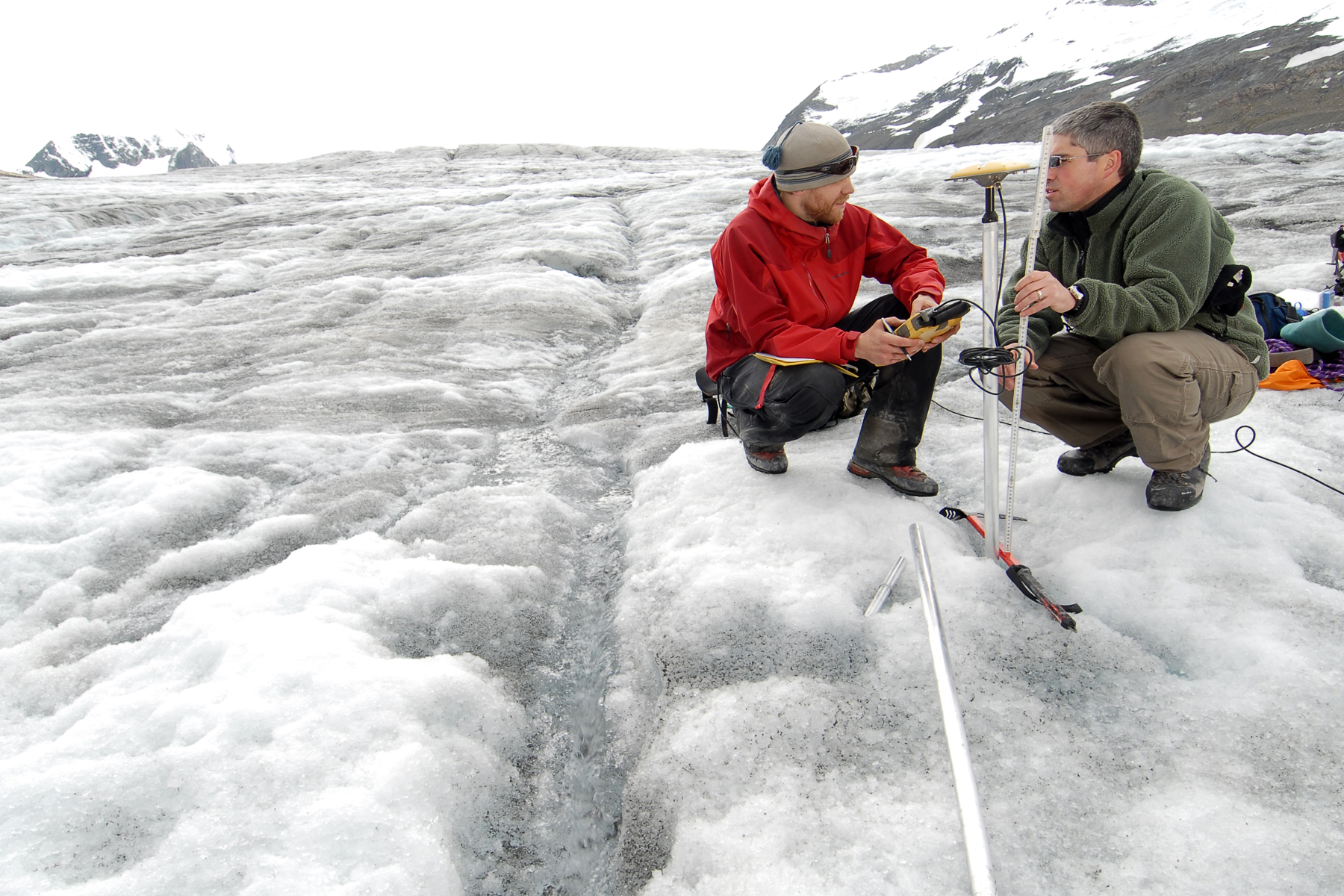A Global Epidemic of Glacier Melt
"Things that normally happen in geologic time are happening during the span of a human lifetime. It's like watching the Statue of Liberty melt."
"This glacier used to be closer [since 1901, Sperry Glacier has shrunk from more than 800 acres (320 hectares) to 300 acres (120 hectares)]. That's out of date."
"It's now less than 250 acres (100 hectares)."
Daniel Fagre, research scientist, U.S. Geological Survey Global Change Research Program
 |
| A glacier in the Pamir Mountains of Central Asia where some of the largest runoff changes are projected to occur Source: Nozomu Takeuchi/Twitter |
The snows acquired and accumulated over centuries become compressed as time wears on, becoming gradually flowing ice rivers up to around 300 metres of thickness in the Tien Shan range of Central Asia, though glaciers are known elsewhere to assume even thicker proportions, as for example in Antarctica. Glaciers never remain static, they are always moving as they accumulate new snow in winter, and lose ice in summer as melting occurs.
In Kazakhstan and elsewhere around the globe, with its 150,000 glaciers worldwide, melting is beginning to vastly outstrip accumulation, for a net loss of ice. Those glaciers worldwide cover roughly 520,000 square kilometres of the surface of this planet and during the past four decades they have been diminished by the equivalent of a layer of ice 21 metres of thickness. Along with the loss of thickness, smaller glaciers in the Andes and Rockies have disappeared where elsewhere many are losing length as well as thickness.
 |
| Cayoosh Glacier, Marriott Basin, British Columbia Photo: JSR |
The Tuyuksu, about two kilometres in length, is steadily decreasing in length as well. Its research station was positioned a few hundred metres from the Tuyuksu's edge when it was built in 1957. It needs the better part of an hour now, scrambling over boulders and till left as the glacier retreated, to reach the ice tongue, where in six decades the glacier has lost over 800 metres. As it melts, the rivulets become torrents, carving surface channels in its hurried wake.
The Little Almaty River, fed from the flow, services the capital city of the country, Almaty, supplying drinking water for two million people and irrigation for cornfields and other crops nearby. The fear is that in the next twenty years shortages of water will loom, threatening water deprivation. "At some point they cannot produce the water they are providing right now. It's really important for water managers to know when this tipping point is reached", explained Maatthias Huss, researcher at the Swiss Federal Institute of Technology, in Zurich.
 |
| PhD student Matt Beedle (left) and professor Brian Menounos measure changes in glacier thickness using GPS UNBC |
Labels: Climate Change, Environment, Geology, Glaciers

<< Home